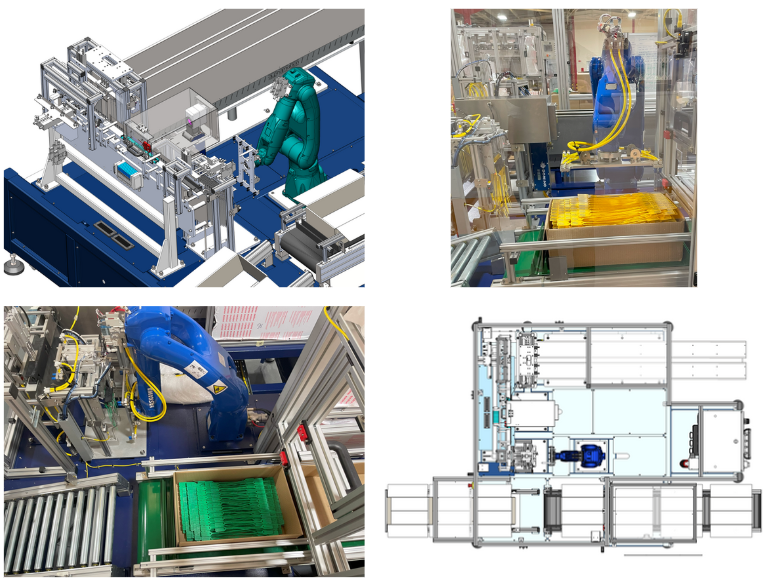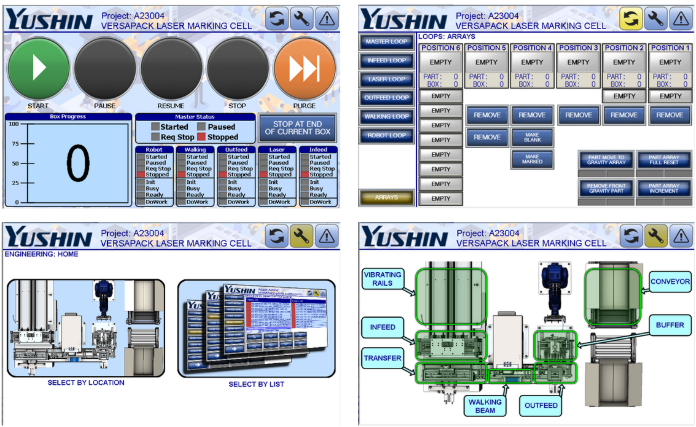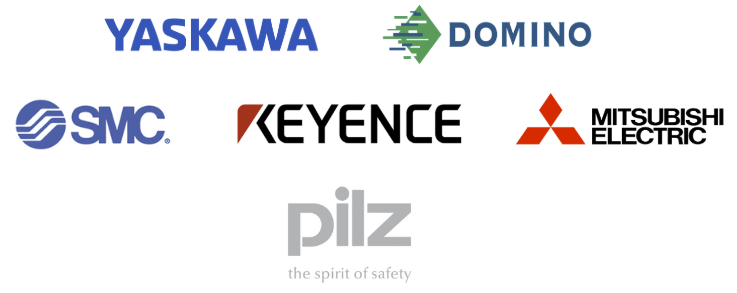Laser Marking Automation
Versapak, a leader in security seals, sought to increase the production of its flagship VersaLite product while offering flexible laser engraving that could be tailored to individual client requirements. The challenge was to achieve this goal without dedicating an entire moulding cell to the task. Additionally, the parts needed to be automatically packed into boxes at the end of the line to optimize workflow.

Solution
In response to Versapak’s needs, a bespoke stand-alone system was developed that integrated automation components including:
- Vibratory infeed to reliably deliver parts into the system.
- Pneumatic handling and transfer to efficiently move parts through the various process stages.
- Laser marking to provide consistent and high-quality engravings for each part.
- 6-axis robotic box filling to ensure accurate and reliable box packing.
The system was designed to be operated by a single operator, ensuring ease of use and minimal staffing requirements.
Result
The implementation of the bespoke automation system led to several significant outcomes for Versapak:
- Production capacity increased up to 70,000 marked parts per day, more than doubling the original output of 30,000 parts per day.
- Consistent laser marking was achieved, meeting high-quality standards expected for the VersaLite Product.
- The system’s successful training and implementation not only provided Versapak with a robust automation solution but also enabled them to develop their in-house automation knowledge, positioning them well for future growth and continued investment.
Challenges
Despite the successful implementation, several challenges arose throughout the development and deployment process:
- Part Handling and Consistency: High variation of the flexible parts posed difficulties in handling and transporting parts through the system. Defining what constituted a ‘good’ part was crucial to the success of the project. Working closely with Versapak, parameters for acceptable product quality were established, and Versapak worked diligently to refine their processes to meet these standards for the automation.
- Box Count Integrity: Without a vision system, maintaining box count integrity proved challenging. To address this, Yushin developed a Standard Operating Procedure (SOP) that allowed the system to be reset in the unlikely case that issues arose, ensuring accuracy and consistency in the packed box count.
- HMI Development: Designing the Human-Machine Interface (HMI) to be user-friendly was critical for operator training and efficiency. As this was the first turnkey automation cell for Versapak, developing an interface that was easy to follow was crucial for successful implementation. Custom pages were developed to clearly display the status of various stations of the machinery, making it easier to understand the system’s operation and troubleshoot potential issues.

By closely collaborating with Versapak, Yushin tailored the solution to address their specific requirements and challenges. The bespoke system not only increased production capacity and ensured high-quality standards but also demonstrated Yushin’s ability to deliver a scalable and adaptable solution that met Versapak’s unique needs, positioning them for continued growth and success in their industry.
